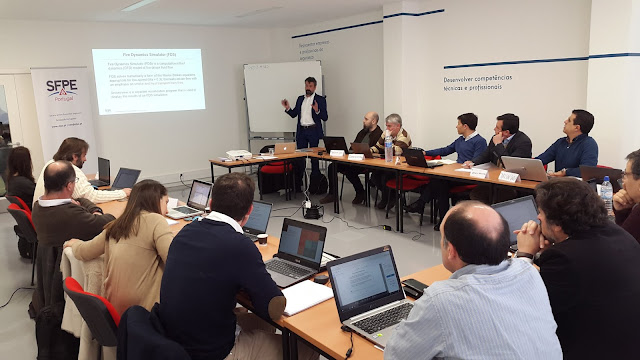Recommended readings
 This book covers the four forms of fire: diffusion flames, smoldering, spontaneous combustion, and premixed flames. Using a quantitative approach, it presents an ideal introduction to the scientific principles behind fire behavior. Individual sections thoroughly discuss such vital issues as heat transfer, ignition, flame spread, fire plumes, heat flux as a damage variable, and more. Formulas help the student examine fire from a quantitative standpoint. While explaining the science of fire with a precision found nowhere else, the text applies that science to fire safety design and investigation.
This book covers the four forms of fire: diffusion flames, smoldering, spontaneous combustion, and premixed flames. Using a quantitative approach, it presents an ideal introduction to the scientific principles behind fire behavior. Individual sections thoroughly discuss such vital issues as heat transfer, ignition, flame spread, fire plumes, heat flux as a damage variable, and more. Formulas help the student examine fire from a quantitative standpoint. While explaining the science of fire with a precision found nowhere else, the text applies that science to fire safety design and investigation. Enclosure Fire Dynamics (B.Karlsson, J.Quintere)
The increasing complexity of technological solutions to both fire safety design issues and fire safety regulations demand higher levels of training and continuing education for fire protection engineers. Historical precedents on how to deal with fire hazards in new or unusual buildings are seldom available, and new performance-based building codes often require mathematical or computer fire modeling. Until now, however, there has been no current, truly comprehensive engineering book that builds an in-depth understanding of the scientific aspects of enclosure fires.
An Introduction to Fire Dynamics (D.Drysdale)
It brings together, for the first time, the basic scientific and engineering principles essential to an understanding of fire behavior. Gathered from a wide range of sources, it covers basic organic and physical chemistry, aspects of heat and mass transfer, premixed and diffusion flames, ignition flame spread, the steady burning of liquid and solid fuels, burning in enclosures, the concepts of fire severity and resistance, and a brief review of smoke production and movement.
Industrial Fire Protection Engineering (R.G. Zalosh)
Based on the successful course which the author has been teaching for some years at Worcester Polytechnic Institute, this text shows engineers how they can build fire protection into their products, whether they are dealing with an engineering plant, machine, building or its contents. Covering general considerations which relate to the application of all fire protection engineering, the text also examines specific problem areas such as warehousing, storage of flammable liquids, and the safety of electrical equipment and computers.
SFPE Handbook of Fire Protection Engineering (whatever edition, the most recent the better!)

Written by fire scientists and engineers from around the world, the new SFPE Handbook of Fire Protection Engineering provides comprehensive coverage of today's best practices in fire protection engineering and performance-based fire safety.




